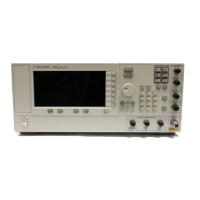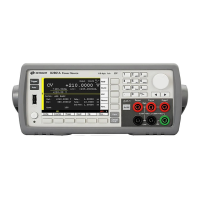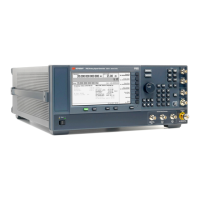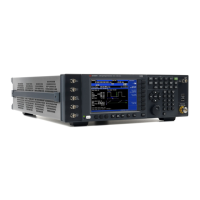Remote Interface Reference 4
Keysight 33210A User’s Guide 245
FORMat:BORDer {NORMal|SWAPped}
FORMat:BORDer?
Used for binary block transfers only. Select the byte order for binary transfers in
the block mode using the DATA:DAC command. The default is NORM. The :BORD?
query returns “NORM” or “SWAP”.
–In NORM byte order (default), the most-significant byte (MSB) of each data
point is assumed first.
–In SWAP byte order, the least-significant byte (LSB) of each data point is
assumed first. Most computers use the “swapped” byte order.
– The function generator represents binary data as signed 16-bit integers, which
are sent as two bytes. Therefore, each waveform data point requires 16 bits,
which must be transferred as two bytes on the function generator’s interfaces.
DATA:COPY <destination arb name> [,VOLATILE]
Copy the waveform from volatile memory to the specified name in
non-volatile memory. The source for the copy is always “volatile”. You cannot copy
from any other source and you cannot copy to “volatile”.
– The arb name may contain up to 12 characters. The first character must be a
letter (A-Z), but the remaining characters can be numbers (0-9) or the
underscore character (“ _ ”). Blank spaces are not allowed. If you specify a
name with more than 12 characters, a “Program mnemonic too long” error is
generated.
– The VOLATILE parameter is optional and can be omitted. Note that the
keyword “VOLATILE” does not have a short form.
– The following built-in waveform names are reserved and cannot be used with
the DATA:COPY command: “EXP_RISE”, “EXP_FALL”, “NEG_RAMP”, “SINC”,
and “CARDIAC”. If you specify one of the built-in waveforms, a “Cannot
overwrite a built-in waveform” error is generated.
– The function generator does not distinguish between upper- and lower-case
letters. Therefore, ARB_1 and arb_1 are the same name. All characters are
converted to upper case.
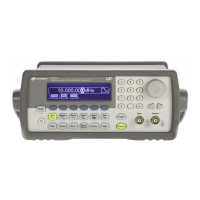
